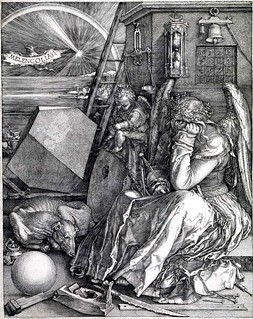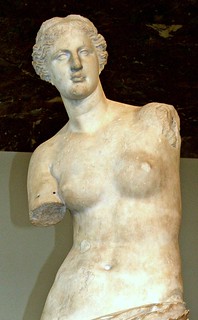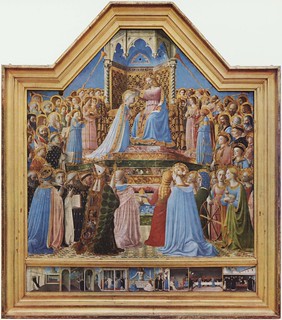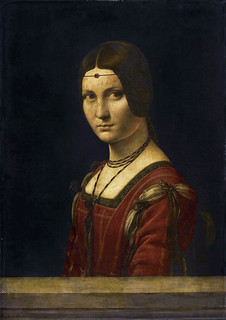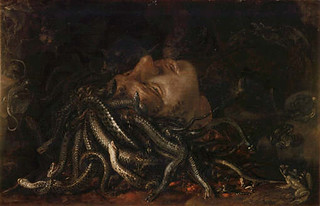- External URL
- Creation
-
Creator (Definite): Walter Horatio PaterDate: 1873
- Current Holder(s)
-
List of named individuals:
William Blake, Goethe, Byron, Sainte-Beuve, Wordsworth, Joachim du Bellay, Pericles, Lorenzo, Winkelmann [1893 text], Francis of Assisi, Boccaccio, Dante, Jean Cousin, Germain Pilon, [Peter] Abelard, Tannhaeuser, Heloise, Michelet, Bernard de Ventadour, Pierre Vidal, M. Fauriel, F.W. Bourdillon [1893 text], Andrew Lang [1893 text], Vernon Lee [1893 text], Victor Hugo, Joachim of Flora, Plato, Heinrich Heine, Homer, Moses, Giovanni Pico della Mirandola, Giovanni Francesco Pico della Mirandola, Sir Thomas More, Marsilio Ficino, Aristotle, Cosmo de' Medici, Careggi, Sandro Botticelli, Piero di Cosimo, Ficino, Lorenzo de' Medici, Emperor Constantine, Alexander the Sixth, Savranola, Heironymo Beniveni, Camilla Rucellai, Joseph Joubert, Angelo Politian, Beniveni, Charles the Eighth, Lorenzo the Magnificent, Leonardo [da Vinci], Vasari, Andrea del Castagno, Giotto, Matteo Palmieri, Angelico, Orcagna, Brunelleschi, Mino, Maso del Rodario, Donatello, Luca della Robbia, Phidias, Piero de' Medici, Titian, Giovanni da Pisa, Jacopo della Quercia, Cesare Guasti, Vittoria Colonna, Marquess of Pescara, Fancesco d'Ollanda, Simonetta, Cardinal of Portugal, Rossellino, Dürer, M. Arsène Houssaye, Passavant, Francis the First, Piero Antonio, Perugino, Verrocchio, Paracelsus, Cardan, Ludovico Sforza, Alforno, Fra Luca Paccioli, Marc Antonio della Torre, Shakespeare, Salaino, Francesco Melzi, Francis the First, Ginevra di Benci, Lisa Gerardini, Francesco del Giocondo, Francis the First, Lewis the Twelfth, Maître Roux, Ronsard, Jaques Cœur, François Clouet, Hemling, Villon, Rabelais, Remy Belleaux, Antoine de Biaf, Pontus de Tyard, Ettienne Jodelle, Jean Daurat, Joachim du Bellay, Henry the Second, Anne of Brittany, The Queen of Scots, Malherbe, Goudimel, Robert Browning, Rousseau.
Unidentified quotes and citations:
'retaining 'somewhat of the old plenty, in dainty viand and silver vessel'' (25)
'And so, while his actual work has passed away, yet his own qualities are still active, and he himself remains, as one alive in the grave, caesiis et vigilibus oculis, as his biographer describes him, and with that sanguine, clear skin, decenti rubore interspersa, as with the light of morning upon it' (28)
'Amid all the cunning and intricacy of his Lombard manner this never left him. Much of it there must have been in that lost picture of Paradise, which he prepared as a cartoon for tapestry, to be woven in the looms of Flanders.' (58)
'The year 1483—the year of the birth of Raffaelle and the thirty-first of Leonardo's life—is fixed as the date of his visit to Milan by the letter in which he recommends himself to Ludovico Sforza, and offers to tell him, for a price, strange secrets in the art of war.' (61)
'he painted the portraits of Ludovico's mistresses... and Cecilia Galerani the poetess, of Ludovico himself, and the Duchess Beatrice' (63)
'How princely, how characteristic of Leonardo, the answer, Quanto piu, un'arte porta seco fatica di corpo, tanto piu e vile!' (n. on p. 64)
'This curious beauty is seen above all in his drawings, and in these chiefly in the abstract grace of the bounding lines. Let us take some of these drawings, and pause over them awhile; and, first, one of those at Florence—the heads of a woman and a little child... You may note a like pathetic power in drawings of a young man seated in a stooping posture, his face in his hands, as in sorrow; of a slave sitting in an uneasy inclined posture, in some brief interval of rest; of a small Madonna and Child... Take again another head, still more full of sentiment, but of a different kind, a little drawing in red chalk... Another drawing might pass for the same face in childhood... But among the more youthful heads there is one at Florence which Love chooses for its own—the head of a young man, which may well be the likeness of Andrea Salaino.' (65-66)
'it had always been his philosophy to "fly before the storm"' (72)
'Monsieur Lyonard, peinteur du Roy pour Amboyse—so the letter of Francis the First is headed. It opens a prospect, one of the most interesting in the history of art, where, under a strange mixture of lights, Italian art dies away as a French exotic.' (72)
''The time of my youth,' says Du Bellay, 'was lost, like the flower which no shower waters, and no hand cultivates.'' (78)
'A German biographer of Winckelmann has compared him to Columbus.' (95)
'criticism must never for a moment forget that 'the artist is the child of his time.'' (98)
'Athenaeus tells the story of one who, coming to a temple of Latona, had expected to find some worthy presentment of the mother of Apollo, and laughed on seeing only a shapeless wooden figure.' (100)
'the transition from curve to curve is so delicate and elusive, that Winckelmann compares it to a quiet sea, which, although we understand it to be in motion, we nevertheless regard as an image of repose' (109)
Biblical quotations and citations:
'Desire of all nations' (32)
'ex forti dulcedo' Judges 14:14 (41)
'Hers is the head upon which all 'the ends of the world are come,'' I Corinthians 10:11 (70)
'a house not made with hands.' II Corinthians 5:1 (87)
''On execute mal ce qu'on n'a pas concu soi-meme' —words spoken on so high an occasion—are true in their measure of every genuine enthusiasm.' [attr. by Pater to 'Charlotte Corday before the Convention'] (93)
'He makes gods in his own image' see Genesis 1:27 (99)
'rise up with wings as eagles' Isiah 40:31 (99)
'I did but taste a little honey with the end of the rod that was in mine hand, and lo, I must die!' I Samuel 14:43 (111)
- No links match your filters. Clear Filters
-
Cites
 Albrecht Dürer, Melancholia. 1514.
Albrecht Dürer, Melancholia. 1514.
Description:''La Gioconda' is, in the truest sense, Leonardo's masterpiece, the revealing instance of his mode of thought and work. In suggestiveness, only the Melancholia of Duerer is comparable to it' (69)
-
Cites
 Angelico, Coronation of the Virgin. c. 1434-1435.
Angelico, Coronation of the Virgin. c. 1434-1435.
Description:'Take, for instance, a characteristic work of the middle age, Angelico's Coronation of the Virgin, in the cloister of Saint Mark's at Florence. In some strange halo of a moon Christ and the Virgin Mary are sitting, clad in mystical white raiment, half shroud, half priestly linen. Our Lord, with rosy nimbus and the long pale hair, tanquam lana alba et tanquam nix, of the figure in the Apocalypse, sets, with slender finger tips, a crown of pearl on the head of his mother, who, corpse-like in her refinement, bends to receive it, the light lying like snow upon her forehead. Certainly, it cannot be said of Angelico's fresco that it throws into a sensible form our highest thoughts about man and his relation to the world; but it did not do this adequately even for Angelico. For him all that is outward or sensible in his work—the hair like wool, the rosy nimbus, the crown of pearl—is only the symbol or type of an inexpressible world, to which he wishes to direct the thoughts; he would have shrunk from the notion that what the eye apprehended was all.' (101-102)
-
Cites
 Anne of Brittany (illus. Jean Bourdichon), Les Grandes Heures d'Anne de Bretagne. c. 1503-1508.
Anne of Brittany (illus. Jean Bourdichon), Les Grandes Heures d'Anne de Bretagne. c. 1503-1508.
Description:'A light, aerial delicacy, a simple elegance—une nettete remarquable d'execution:—these are essential characteristics alike of Villon's poetry, and of the Hours of Anne of Brittany.' (74)
-
Cites
 Anon. La Belle Feronière. c. 1490-1496.
Anon. La Belle Feronière. c. 1490-1496.
Description:Pater attributes this work to Leonardo da Vinci: 'The portrait of... Lucretia Crivelli has been identified with La Belle Feroniere of the Louvre' (63)
-
Cites
 Anon. Le Chanson de Roland. c. 1040-1115.
Anon. Le Chanson de Roland. c. 1040-1115.
Description:'the rough and ponderous mass becomes, as if by passing for a moment into happier conditions, or through a more gracious stratum of air, graceful and refined, like the carved ferneries on the granite church at Folgoat, or the lines which describe the fair priestly hands of Archbishop Turpin, in the song of Roland; although below both alike there is a fund of mere Gothic strength, or heaviness.' (74)
-
Cites
 Anon. Virgin of the Balances. n.d.
Anon. Virgin of the Balances. n.d.
Description:'to the last Leonardo recalls the studio of Verrocchio, in the love of beautiful toys, such as the vessel of water for a mirror, and lovely needle-work about the implicated hands in the Modesty and Vanity, and of reliefs like those cameos which in the Virgin of the Balances hang all round the girdle of Saint Michael' (58)
'you may follow it springing from its distant source among the rocks on the heath of the Madonna of the Balances, passing, as a little fall, into the treacherous calm of the Madonna of the Lake' (63)
'Sometimes, as in the little picture of the Madonna of the Balances, in which, from the bosom of His mother, Christ weighs the pebbles of the brooks against the sins of men, we have a hand, rough enough by contrast, working upon some fine hint or sketch of his.' (66-67)
-
Cites
 Anon., Medusa. c.1600.
Anon., Medusa. c.1600.
Description:Attributed to Leonardo da Vinci by Pater (following Luigi Lanzi): 'All these swarming fancies unite in the Medusa of the Uffizii. Vasari's story of an earlier Medusa, painted on a wooden shield, is perhaps an invention; and yet, properly told, has more of the air of truth about it than any-thing else in the whole legend. For its real subject is not the serious work of a man, but the experiment of a child. The lizards and glow-worms and other strange small creatures which haunt an Italian vineyard bring before one the whole picture of a child's life in a Tuscan dwelling—half castle, half farm—and are as true to nature as the pretended astonishment of the father for whom the boy has prepared a surprise. It was not in play that he painted that other Medusa, the one great picture which he left behind him in Florence. The subject has been treated in various ways; Leonardo alone cuts to its centre; he alone realises it as the head of a corpse, exercising its powers through all the circumstances of death. What may be called the fascination of corruption penetrates in every touch its exquisitely finished beauty. About the dainty lines of the cheek the bat flits unheeded. The delicate snakes seem literally strangling each other in terrified struggle to escape from the Medusa brain. The hue which violent death always brings with it is in the features: features singularly massive and grand, as we catch them inverted, in a dexterous foreshortening, sloping upwards, almost sliding down upon us, crown foremost, like a great calm stone against which the wave of serpents breaks. But it is a subject that may well be left to the beautiful verses of Shelley.' (60)
-
Cites
 Arsène Houssaye, Histoire de Léonard de Vinci. 1869.
Arsène Houssaye, Histoire de Léonard de Vinci. 1869.
Description:'a French writer, M. Arsène Houssaye, gathering together all that is known about Leonardo in an easily accessible form, has done for the third of the three great masters what Grimm has done for Michelangelo, and Passavant, long since, for Raffaelle.' (56-57)
'M. Arsène Houssaye has succeeded in giving a pensive local colour to this part of his subject, with which, as a Frenchman, he could best deal.' (72)
-
Cites
 Berlin Adorante. c. 300 BC
Berlin Adorante. c. 300 BC
Description:'This colourless, unclassified purity of life, with its blending and interpenetration of intellectual, spiritual, and physical elements, still folded together, pregnant with the possibilities of a whole world closed within it, is the highest expression of that indifference which lies beyond all that is relative or partial. Everywhere there is the effect of an awaking, of a child's sleep just disturbed. All these effects are united in a single instance—the adorante of the museum of Berlin, a youth who has gained the wrestler's prize, with hands lifted and open, in praise for the victory. Naive, unperplexed, it is the image of man as he springs first from the sleep of nature; his white light taking no colour from any one-sided experience, characterless, so far as character involves subjection to the accidental influences of life.' (109)
-
Cites
 Bernardino Luini, The Conversion of the Magdalene, or An Allegory of Modesty and Vanity. c. 1520.
Bernardino Luini, The Conversion of the Magdalene, or An Allegory of Modesty and Vanity. c. 1520.
Description:attributed to Leonardo da Vinci by Pater: 'to the last Leonardo recalls the studio of Verrocchio, in the love of beautiful toys, such as the vessel of water for a mirror, and lovely needle-work about the implicated hands in the 'Modesty and Vanity'.' (58)
-
Cites
 Carlo Amoretti, Memorie storiche sulla Vita, gli Studi at le Opere del Leonardo da Vinci. Milan, 1804.
Carlo Amoretti, Memorie storiche sulla Vita, gli Studi at le Opere del Leonardo da Vinci. Milan, 1804.
Description:'His legend, as the French say, with the anecdotes which every one knows, is one of the most brilliant in Vasari. Later writers merely copied it, until, in 1804, Carlo Amoretti applied to it a criticism which left hardly a date fixed, and not one of those anecdotes untouched.' (56)
-
Cites
 Edgar Quinet, Les Révolutions d'Italie. 1848.
Edgar Quinet, Les Révolutions d'Italie. 1848.
Description:'it reminds one of a passage in which M. Edgar Quinet describes the great discoverer's famous voyage. His science was often at fault; but he had a way of estimating at once the slightest indication of land, in a floating weed or passing bird; he seemed actually to come nearer to nature than other men.' (95)
-
Cites
 Francesco di Giovanni Botticini, Assumption of the Virgin. c.1475-1476.
Francesco di Giovanni Botticini, Assumption of the Virgin. c.1475-1476.
Description:Incorrectlty attributed to Botticelli by Pater: 'One picture of his [i.e. Botticelli's], with the portrait of the donor, Matteo Palmieri, below, had the credit or discredit of attracting some shadow of ecclesiastical censure.' (31)
-
Cites
 Francia, Crucifiction. c. 1485.
Francia, Crucifiction. c. 1485.
Description:'if the gods could have seemed for ever only fleet and fair, white and red - not white and red as in Francia's 'Golgotha.' (104)
-
Cites
 Francis Bacon, Novum Organum Scientiarum. 1620.
Francis Bacon, Novum Organum Scientiarum. 1620.
Description:Leonardo, according to Pater, 'was seeking to satisfy a boundless curiosity by her perpetual surprises, a microscopic sense of finish by her finesse, or delicacy of operation, that subtilitas naturae which Bacon notices.' (62)
-
Cites
 Giovanni Boccaccio, The Decameron: Prince Galehaut. c. 1351.
Giovanni Boccaccio, The Decameron: Prince Galehaut. c. 1351.
Description:'They write love-poems for hire. Like the people in Boccaccio's 'Decameron', they form a party who in an age of great troubles, losses, anxieties, amuses itself with art, poetry, intrigue.' (80-81)



